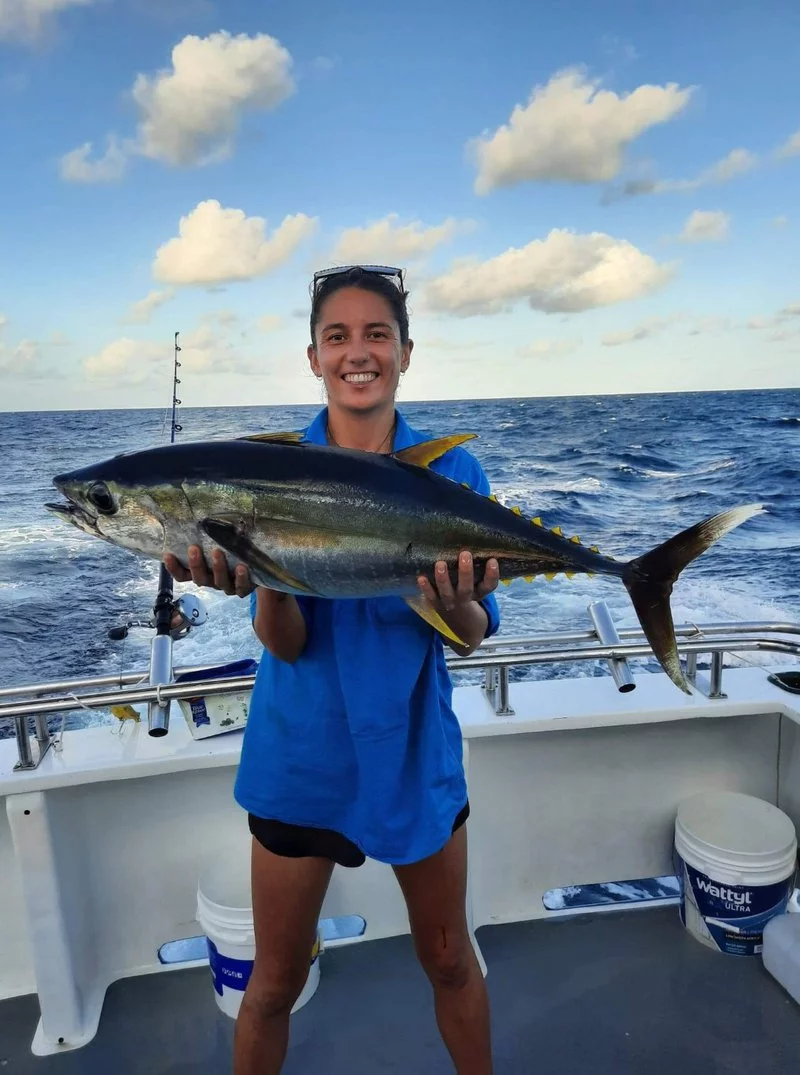Tuna like mackerels are part of the family Scombridae which has about 51 different species. Like their mackerel cousins tuna are large powerful oceanic predators built for speed. They are also a popular eating fish, one of the most widely eaten in the world, and one of the most heavily fished. Of all tuna in the world oceans 5 types are commonly targeted by commercial fisheries these are the albacore, bluefin, yellowfin, bigeye and the skipjack. The latter makes up the majority of tuna caught commercially as it is the most widely abundant species. Tuna are also one of few fish who have the ability to maintain their body temperature at a level above that of their surrounding environment where most fish are cold blooded meaning their body temperature is governed by that of their environment. Another well known fish that has this ability is the Great white shark.
Tuna can be found all over the world in tropical and temperate ocean waters. They are pelagic fish which means they inhabit offshore open waters off the seafloor. Some species are highly migratory and will travel thousands of kilometres across the world's oceans to reach prime feeding and breeding grounds.
Due to the fact that they are such popular and important fish commercially many species of tuna are at risk of over exploitation. This means that breeding adults are being removed from the populations in such quantities and at a faster rate than they can reproduce to replenish the stock. Currently the bluefin tunas are most at risk as their populations have declined significantly in the last few decades due to high demand for their delicious meat.
Most people know tuna as the smelly fish in the tin cans but they are actually beautiful large fish. They have a streamlined torpedo shaped body which is very muscular and strong, similar to that of mackerel but with a deeper body. This gives them the ability to reach incredible speeds in the water, the yellowfin tuna for example has been recorded swimming at speeds of around 75 kilometres and hour. They have a countershaded colouring and in general are dark blue on top and silver/white on the other side. This helps them to camouflage in the water, the blue on top makes them almost invisible when viewed from above as they blend in with the oceans depths and the light colour on the bottom does the same when they are viewed from below, making them indiscernible from the light ocean surface. Bluefin tuna, of which there are 3 different species, are the largest in the tuna family. When fully grown an Atlantic bluefin tuna can reach over 3 meters in length and weigh over 600 kilograms putting them up there with some of the largest bony fish in the ocean including blue and black marlin.
As mentioned above these large athletic fish are carnivores. They will feed on. A wide variety of different animals. Smaller fish, crustaceans and molluscs such as squid. The wide variety in their diet means that tuna can be caught with both baits and lures. Here in the Whitsundays tuna are commonly caught while trolling lures or by casting directly into a feeding school. Once caught they are best cooked and eaten soon after or even eaten raw as sashimi.

